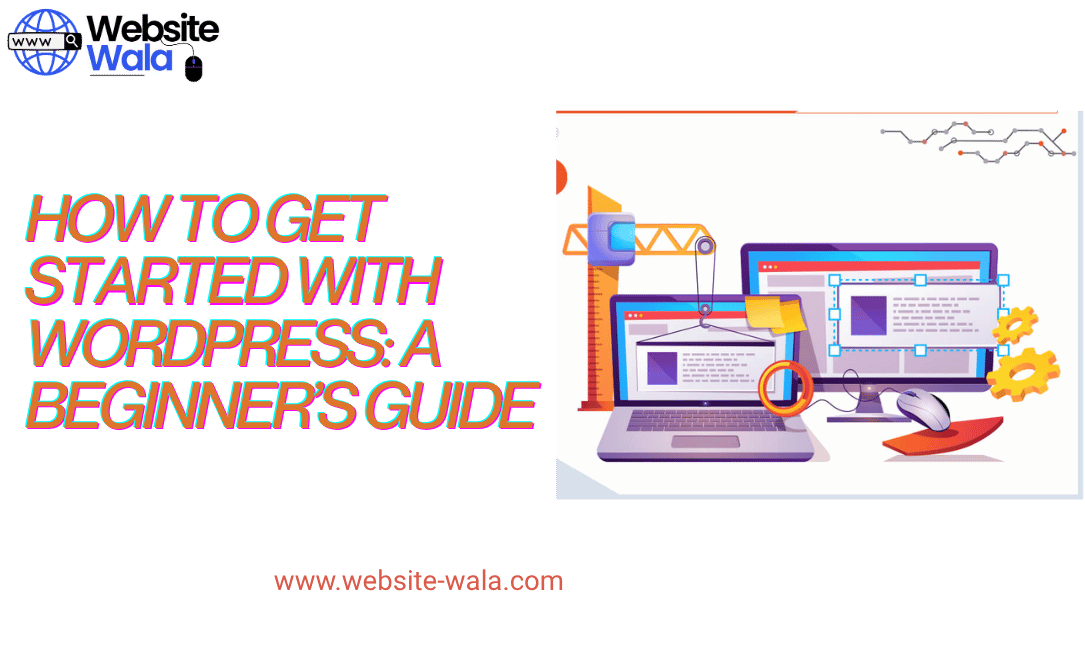
Learn How to Get Started with WordPress: A Beginner’s Guide to setting up a website, installing WordPress, and customizing themes and plugins.
How to Get Started with WordPress: A Beginner’s Guide
If you’re looking to create a website but feel overwhelmed by the technicalities, you’re not alone. WordPress is one of the most popular platforms for website development, and knowing how to get started with WordPress: a beginner’s guide can make the process seamless and enjoyable. This guide will walk you through everything from choosing a hosting provider to installing WordPress, customizing themes, and adding essential plugins.
Why WordPress is Perfect for Beginners
WordPress powers over 40% of all websites on the internet, and for a good reason. Its user-friendly interface, extensive theme library, and flexibility through plugins make it ideal for beginners. This beginner's guide will show you that even without coding experience, you can start building a professional-looking website quickly.
Benefits of WordPress for Website Development
-
Ease of use: The intuitive dashboard makes managing content simple.
-
Customization: Thousands of themes and plugins allow you to tailor your site.
-
Scalability: WordPress grows with your business or personal project.
-
Supportive community: Access to forums, tutorials, and guides for any challenge.
By understanding these benefits, you can confidently start getting started with WordPress without fear of technical complications.
Step 1: Choose a Hosting Provider
Before installing WordPress, you need a reliable hosting provider. Your hosting provider stores your website files and ensures your site runs smoothly. When selecting a host, consider:
-
Speed and reliability: A fast, stable server improves user experience and SEO.
-
Security features: SSL certificates and regular backups are crucial.
-
WordPress compatibility: Many providers offer one-click WordPress installation.
Popular hosting providers for beginners include Bluehost, SiteGround, and HostGator. Choosing the right hosting provider is your first step in setting up a website successfully.
Step 2: Installing WordPress
Once you’ve selected a hosting provider, the next step is installing WordPress. Most hosting platforms offer simple one-click installers, making it easy even for first-timers. Here’s a basic process:
-
Log in to your hosting account.
-
Navigate to the WordPress installer section.
-
Select your domain and click “Install WordPress.”
-
Create an admin username and password.
After installation, you can access your WordPress dashboard by visiting yourdomain.com/wp-admin. This is your control center for all content creation and website customization.
Step 3: Choosing and Customizing Themes
Themes control the appearance of your WordPress website. When getting started with WordPress, selecting the right theme is crucial. WordPress offers thousands of free and premium themes to match any niche.
-
Free themes: Ideal for beginners testing the platform.
-
Premium themes: Offer advanced customization, support, and additional features.
Once you select a theme, head to Appearance > Customize to tweak colors, fonts, layouts, and more. The beauty of WordPress lies in its flexibility, making customization intuitive even for beginners.
Step 4: Installing Plugins
Plugins enhance your site’s functionality. Whether you need contact forms, SEO tools, or e-commerce features, plugins are essential for website development.
Some must-have plugins for beginners include:
-
Yoast SEO: Helps optimize your content for search engines.
-
Elementor: Drag-and-drop page builder for easy design.
-
WooCommerce: Perfect for creating an online store.
Installing plugins is simple: navigate to Plugins > Add New, search for your desired plugin, and click “Install.” Activating plugins immediately extends your website’s capabilities.
Step 5: Creating Your First Pages and Posts
Content is the heart of any website. WordPress separates content into pages and posts:
-
Pages: Static content like About, Contact, or Services.
-
Posts: Blog entries or regular updates.
To create a new page, go to Pages > Add New, enter your content, and click “Publish.” For posts, navigate to Posts > Add New. Using WordPress’s editor, you can add text, images, videos, and other media effortlessly.
Step 6: Customization and Ongoing Maintenance
Customizing your website doesn’t stop at themes and plugins. Regular maintenance ensures your site remains secure and efficient.
-
Update WordPress core, themes, and plugins regularly.
-
Back up your website to prevent data loss.
-
Monitor site speed and performance.
This ongoing effort is part of getting started with WordPress successfully and ensures your website continues to grow and evolve.
Additional Tips for Beginners
-
Follow a WordPress tutorial to master the platform step by step.
-
Join WordPress communities or forums for support and inspiration.
-
Experiment with different themes and plugins to find what suits your style.
-
Learn basic SEO to boost your site’s visibility.
By following this beginner’s guide, you’ll develop the skills needed for effective website development, making your WordPress journey less intimidating and more rewarding.
Conclusion
Knowing how to get started with WordPress: a beginner’s guide can transform your website-building experience. From choosing a hosting provider to installing WordPress, selecting themes, installing plugins, and customizing your site, WordPress provides the tools you need to succeed. With a bit of practice and creativity, you can create a professional website that stands out.























